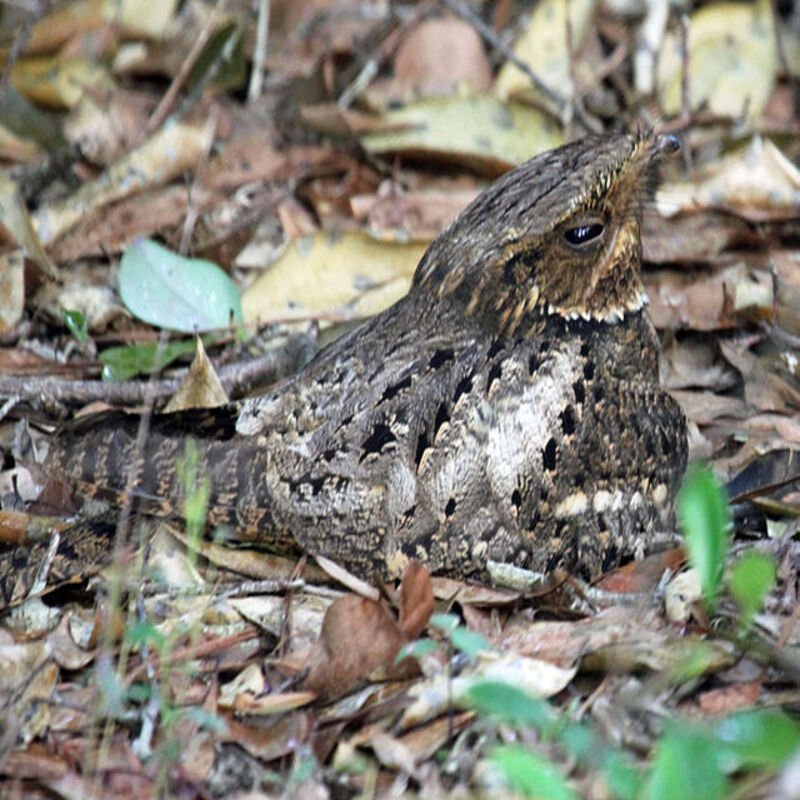Known as the chuck-will’s-widow, Antrostomus carolinensis is a nocturnal bird belonging to the nightjar family Caprimulgidae, which includes the nightjars of North and South America. It may be found in the southeastern United States, among marshes, rocky uplands, and pine woodlands, among other habitat types. It travels to the West Indies, Central America, and northwestern South America during its migration season.
Quick Overview: Antrostomus Carolinensis – Chuck-Will’s-Widow
Body size: Around 11-13 in (28-33 cm) and a weight of 119 g (4.2 oz)
Main colors: Brown, Black, White
Range: Southeastern United States
Migratory Bird: Yes
Best time of the year to see in the U.S.: June, July, August, September
Conservation Status: Least Concern
Chuck-will’s-widow Description
The upper parts of this bird exhibit a mottled brown, buff, and black color. Males display delicate white stripes on their tails when they are in flight. Males and females do not have a white flash in the wing when flying.

Size
These birds have a length of 11-13 in (28-33 cm) and a weight of 119 g (4.2 oz). Their wings could range from 24.5-25.5 in (62-65 cm).
Feeding
The majority of the insects are huge. It preys on huge night-flying insects, particularly beetles and moths, as well as a variety of other species. Small birds, such as warblers, sparrows, and hummingbirds, are also occasionally taken by the crow.
Habitat
Breeds in shaded southern woodlands of several sorts, including open pine forest, oak forests, and the borders of wetlands, among other habitats. In the tropics, subtropical forests and lowland rain forests serve as wintering grounds for birds.
Behavior
Chuck-will’s-widow has a brown, black, and gray color scheme throughout. Foraging and calling are most active during the early morning and late evening hours, similar to other members of the goatsucker family (such as the common nighthawk and eastern whip-poor-will). Chucks prefer to rest lengthwise along a huge tree branch throughout the day, where they are mostly passive.
Antrostomus Carolinensis Scientific Classification
- Kingdom: Animalia
- Phylum: Chordata
- Subphylum: Chelicerata
- Class: Aves
- Order: Caprimulgidae
- Family: Caprimulgidae
- Genus: Antrostomus
- Species: Antrostomus carolinensis
Best time of the year to see
The best time to see these birds in the United States is during the summer season (June – September).
Distribution of the Chuck-will’s-widow in the USA
The Chuck-will’s-widow is a widespread breeding bird in the eastern part of Texas and along the southern border of the Edwards Platea. It may be found in mixed forests with pine in the east and junipers in the Edwards Plateau in the west and north.
The Chuck-will’s-widow can be found in the following states in the United States – Alabama, Alaska, Arkansas, Florida, Georgia, Hawaii, Idaho, Illinois, Indiana, Kansas, Kentucky, Louisiana, Minnesota, Mississippi, Missouri, New Mexico, North Carolina, Ohio, Oklahoma, South Carolina, Tennessee, Virginia, and West Virginia.
